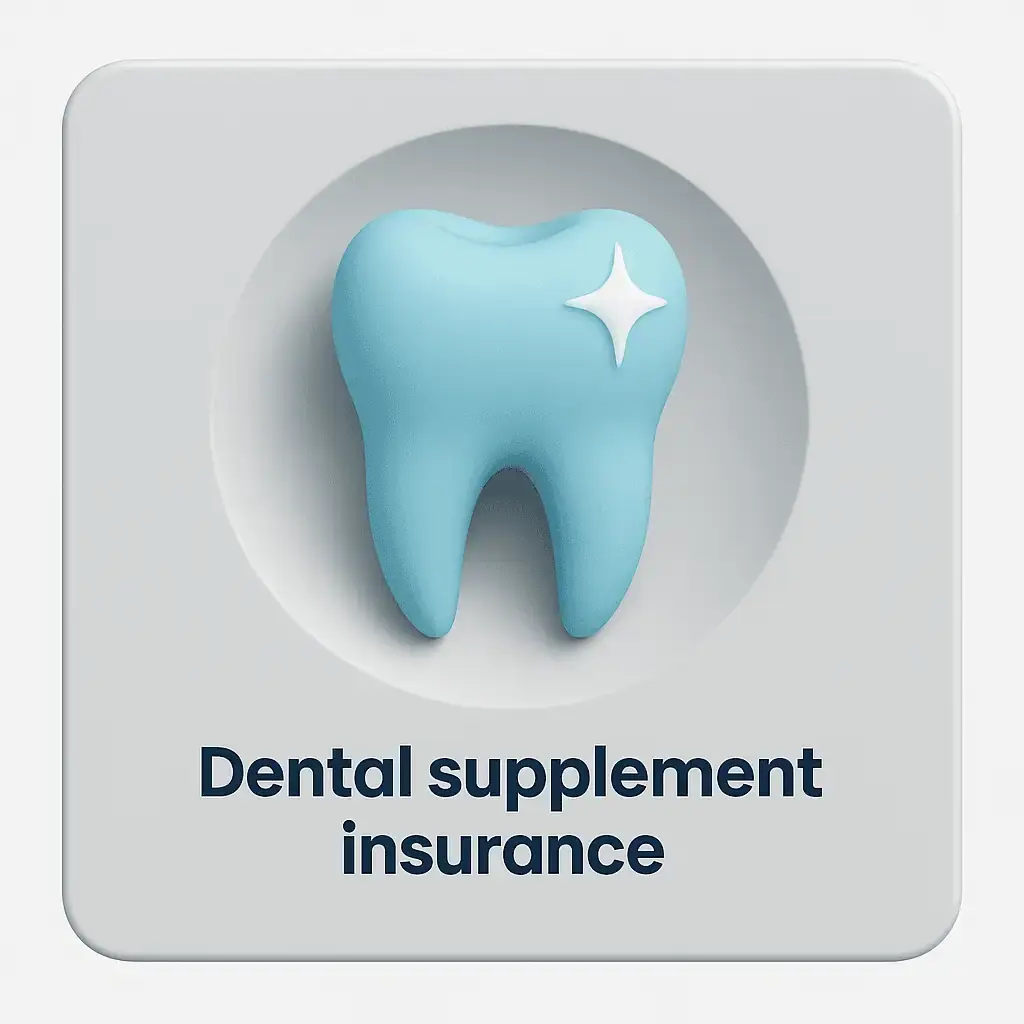.webp)
€800 crown? AOK pays only €150. The rest is on you – unless you're insured.
Dental insurance made for Indian expats in Germany.
Protect your smile – even when your public insurance won’t
Why it matters
Getting treatment for your teeth in Germany can be very expensive – and public health insurance (like TK or AOK) only covers a small fixed amount.
- 💶 A crown costs about €800
- 😬 Public insurance covers roughly €150
- ➡️ You pay the rest – unless you have proper coverage
- ✅ Up to 100% of costs can be reimbursed
- ✅ Includes implants, crowns, cleanings, and more
- ✅ Also covers braces for kids (optional)
- ✅ Professional teeth cleaning (€80–100) often included
- 🌍 Perfect for Indian expats – explained in simple English
Protect your smile — premium care, smart price
Public insurance pays only a fixed subsidy. Our dental add‑on helps you afford implants, crowns, inlays, cleanings and more — without bill shock.
What’s included
Good to know
- GKV pays fixed amounts, not percentages
- Top tariffs can reimburse up to 100% for implants*
- Popular price range: €10–25 / month
- Reimbursements are usually tax‑free
- Expats with public health insurance (GKV)
- Young professionals & families
- Anyone who wants pain‑free, high‑quality treatment
- People staying in Germany long‑term
- We compare 30+ plans and shortlist the best
- Acceptance check for existing fillings & treated teeth
- Claims support — no extra cost
- Explained in simple English
Tips
10 Tips & Tricks for Smart Dental Insurance
1️⃣ Get insured early
The earlier you start, the fewer waiting periods and exclusions apply — especially for implants and major treatments.
2️⃣ Choose plans that include existing fillings
If you already have dental work done, ensure your tariff accepts it to avoid future coverage gaps.
3️⃣ Use professional cleanings regularly
Most tariffs include up to two professional cleanings per year — use them! It keeps your smile healthy and reduces long-term costs.
4️⃣ Ask for a cost plan (Heil- & Kostenplan)
Before expensive treatments, always request a cost plan. Your insurer will confirm what is covered — saving unpleasant surprises.
5️⃣ Combine quality and coverage
Select a tariff that balances implant, inlay and cleaning coverage with affordable premiums.
6️⃣ Don’t rely only on public health insurance (GKV)
Public plans pay fixed subsidies — usually only 15–20% of real costs. Supplementary insurance fills this gap.
7️⃣ Compare plans annually
Insurers update benefits frequently. A yearly check can improve your coverage or save you money.
8️⃣ Keep receipts for reimbursement
Always collect and submit receipts promptly to ensure quick reimbursements — often tax-free.
9️⃣ Consider child orthodontics early
For families, choose tariffs that include braces and orthodontics for children — coverage usually starts early.
🔟 Ask NEOdirect for personalized advice
We analyze over 30 dental plans to find the one that matches your dental history and budget — all explained in English.
FAQ
FAQ – Dental Supplementary Insurance
What is supplementary dental insurance (Zahnzusatzversicherung)?
It’s an add‑on to public health insurance (GKV) that reimburses dental costs like cleanings, high‑quality fillings, crowns, inlays, bridges and implants beyond the small fixed subsidy paid by the GKV.
Why do I need it if I already have public insurance (GKV)?
GKV typically pays only a fixed amount based on the cheapest treatment. Without a dental plan, patients often pay most of modern treatments out of pocket.
What’s covered?
Depending on the tariff: professional teeth cleaning (up to 1–2×/year), composite fillings, crowns and inlays (ceramic or gold), bridges, implants and optional orthodontics for children.
Are implants covered?
Yes, many plans include implants. Some tariffs reimburse up to 100% of the remaining costs after the GKV subsidy, subject to plan limits and approval (Heil‑ & Kostenplan).
How much does it cost per month?
Good plans often start around €10–25/month depending on age, scope and implant coverage.
Are reimbursements tax‑free?
Usually yes. Insurers reimburse eligible dental costs directly to you. Individual tax situations can vary.
Can I get covered with existing fillings or treated teeth?
Many tariffs accept them, though benefits and waiting periods can differ. We’ll shortlist plans that match your dental history.
Are there waiting periods?
Commonly 6–8 months for major work. Prevention like cleanings may be covered sooner, depending on the plan.

